If you're a fan of Miang Kham, you'll no doubt love Miang Pla Tod. This leaf-wrapped appetizer features small pieces of fried fish, ginger, shallots, lime, and roasted peanuts drizzled with a sweet and sour sauce and eaten in one delicious bite.
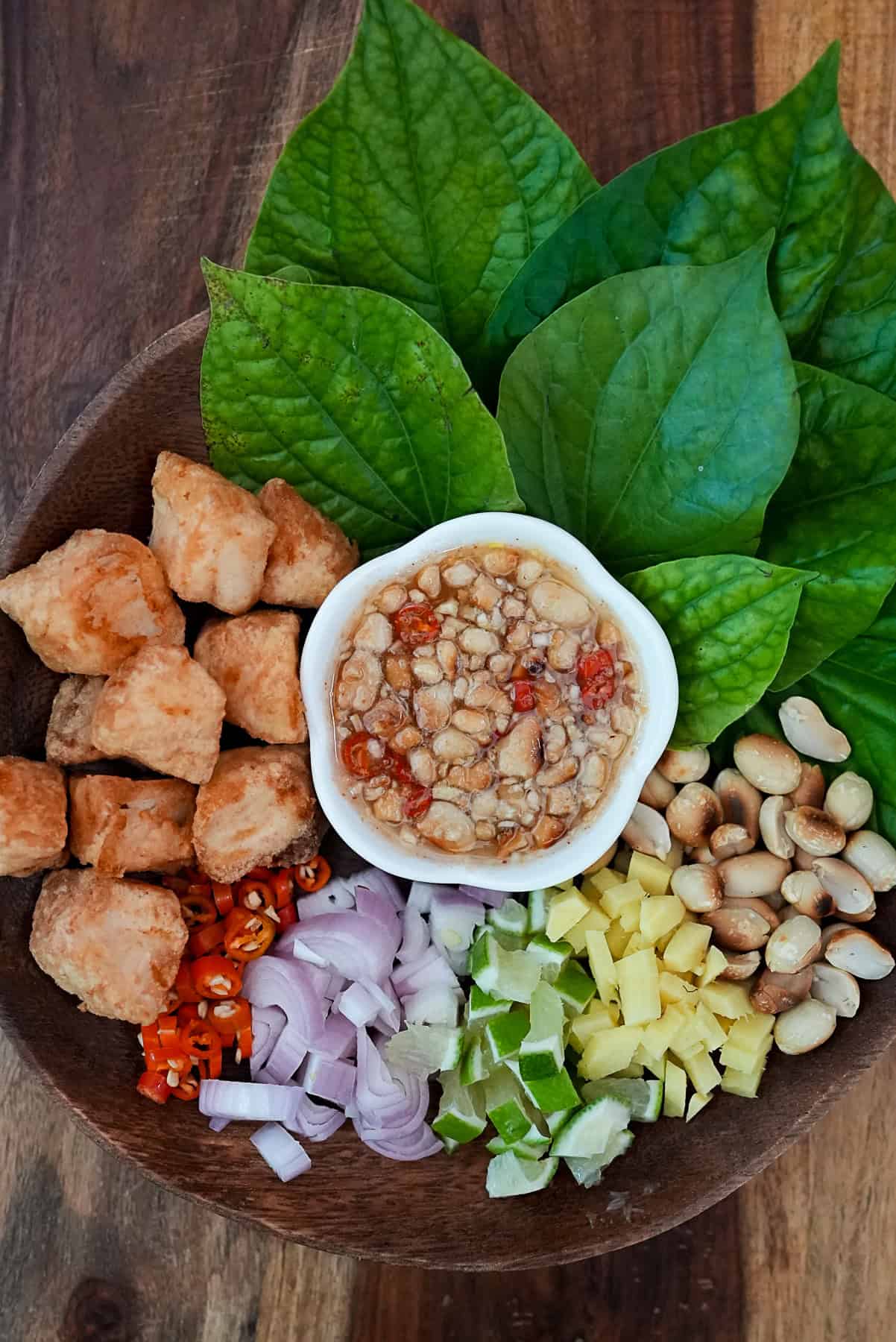
While Miang Kham gets all of the attention outside of Thailand, there are actually many different types of Miang in Thai cuisine. A Miang refers to an appetizer or snack made of various bite-sized ingredients that are topped with a sauce and wrapped in a leaf. Although the assortment of ingredients can have many different flavors and textures, the idea of a Miang is that they all come together with the sauce and the leaf to form one uniformly tasty bite.
The Miang presented here, Miang Pla Tod, is one of my favorite types of Miang. It combines tender bites of fried fish with spicy ginger, aromatic shallots, tangy lime, and crunchy roasted peanuts for a bright burst of flavors. A nicely balanced sweet and sour sauce ties them all together. In addition to being delicious, Miang Pla Tod is a bit quicker and easier to make than Miang Kham. For these reasons, it's my new go-to appetizer whenever I'm lucky enough to find Wild Pepper Leaves for wrapping!
Jump to:
Miang Pla Tod
There are four main components to Miang Pla Tod. Fortunately, all of them are quick and easy to prepare. I'll walk you through all of the details in the sections below so that you can put this delicious Thai appetizer together effortlessly.
- Wild Pepper Leaves
- Fried Fish
- Fresh Ingredients
- Sweet and Sour Sauce
Wild Pepper Leaves
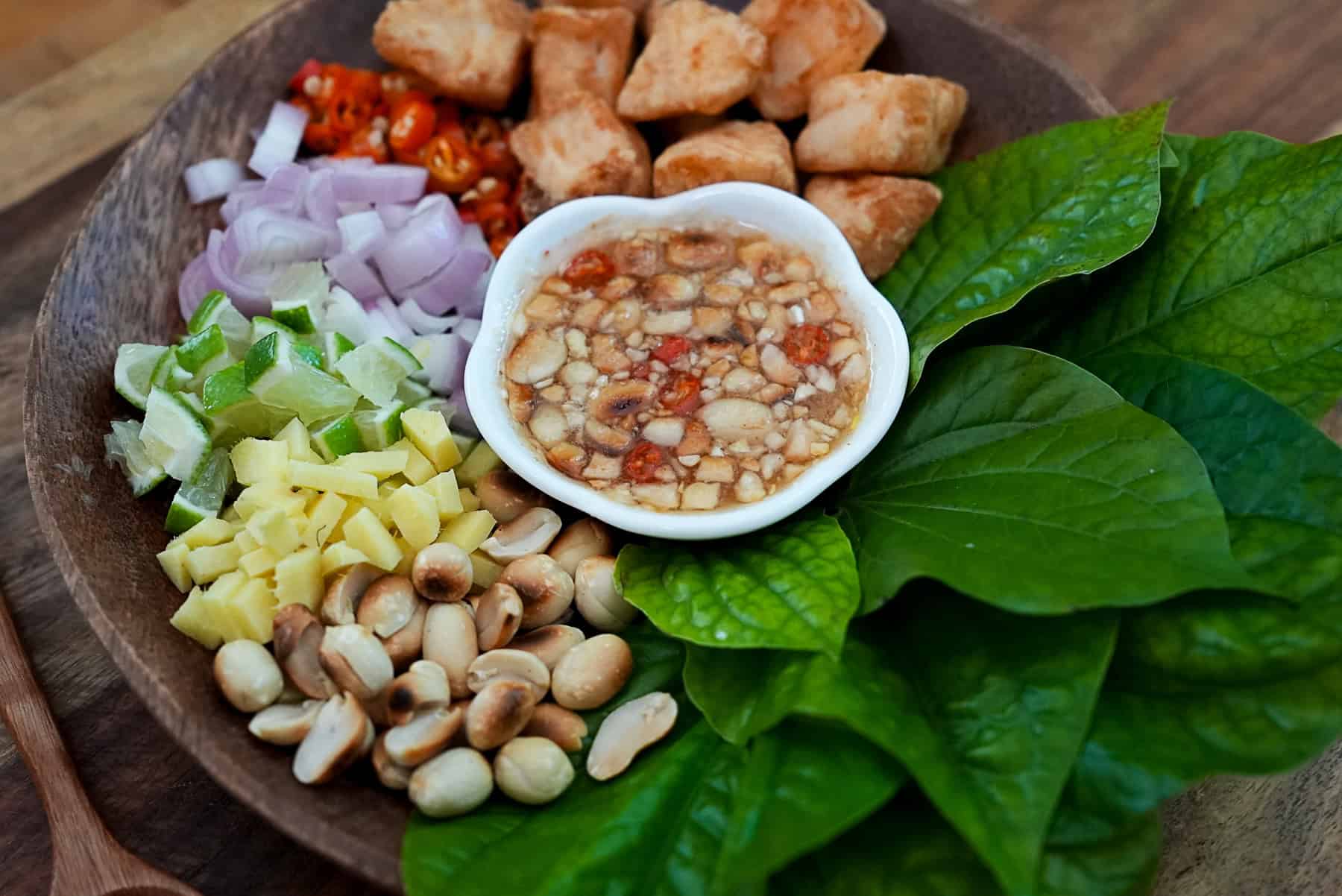
Wild pepper leaves are commonly used as a wrapper for Miang Pla, just like for Miang Kham. These leaves are abundant in Southeast Asia, where they grow as low-to-the-ground vines with shiny green, heart-shaped leaves. In Thailand, they're known as Bai Cha Plu (ชะพลู) and in Vietnam, they're known as La Lot. You can find them labelled as wild pepper leaves or wild betel leaves in the U.S. Here's more information all about Wild Pepper Leaves.
There's no great substitute for the peppery, slightly bitter taste of wild pepper leaves. However, if you're not able to find them, some crunchy lettuce such as Romaine can work as a wrapper for Miang Pla. For either leaf, simply remove the leaves from the stem, then wash and dry them thoroughly.
Fried Fish
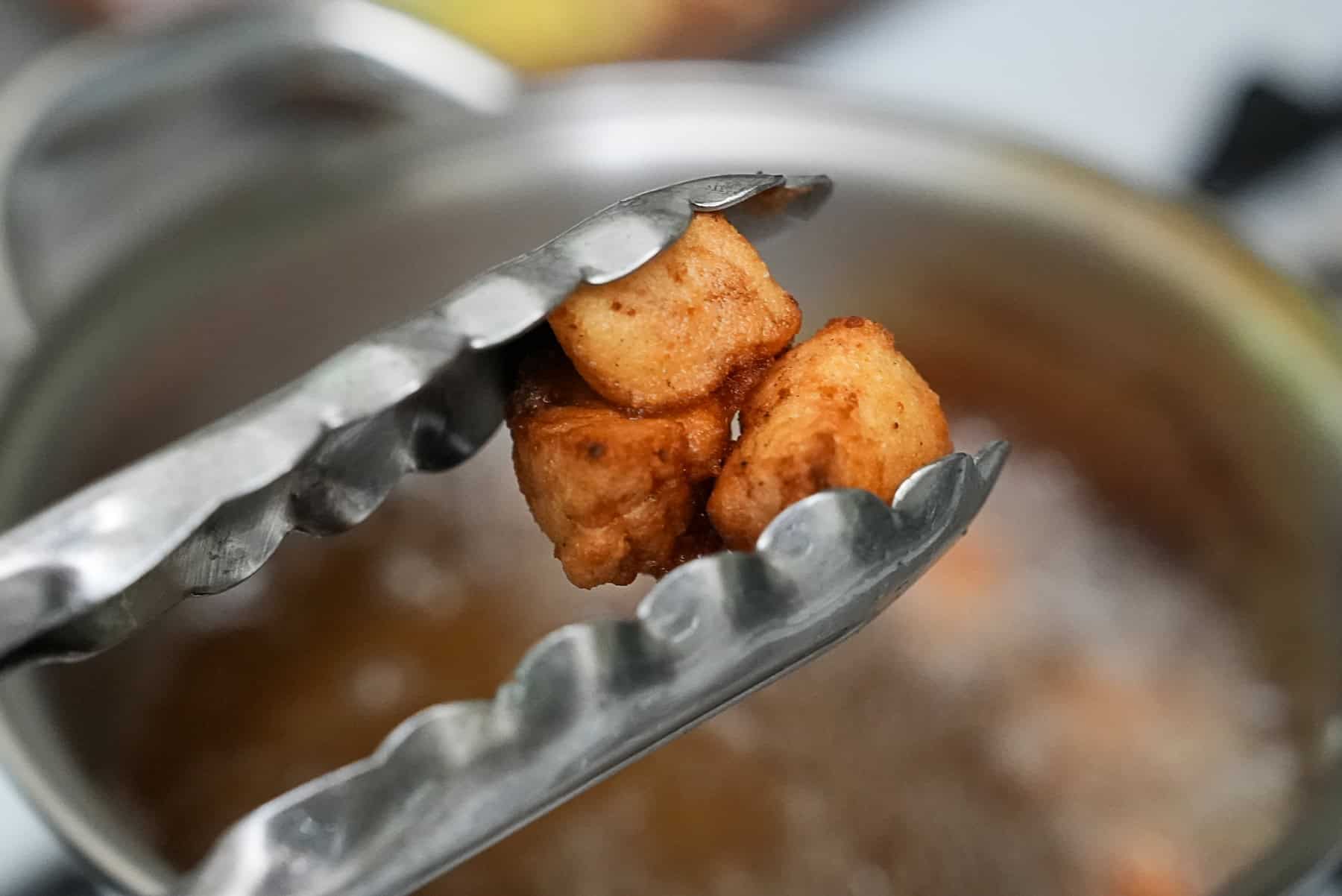
Fried fish is the namesake ingredient of Miang Pla Tod, as Pla means fish and Tod means fried. Any mild-tasting firm fish will work. I used tilapia here. Simply cut the fish into bite-sized pieces, coat them with Gogi tempura flour, and deep fry until golden brown and crispy. Sprinkle the fried fish pieces with salt as soon as they come out of the hot oil.
If you don't have Gogi tempura flour on hand (and you should - it makes the crispiest Thai fried chicken!), you can use cornstarch to coat the fish pieces instead.
Fresh Ingredients
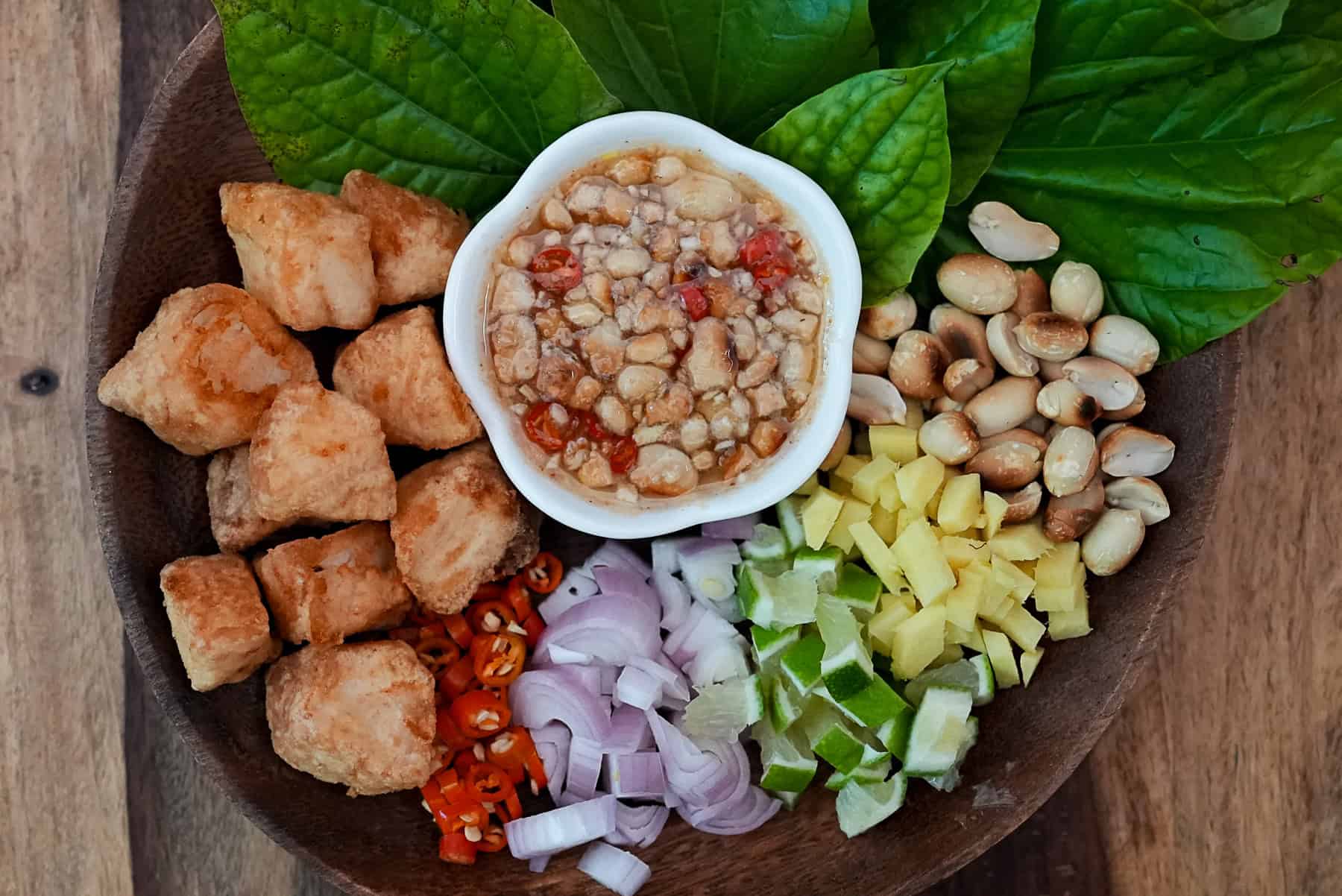
The fresh ingredients that accompany the fried fish of Miang Pla Tod are somewhat flexible. Many recipes call for the fresh ingredients listed here. Others add khanom jeen noodles, cucumber, or herbs such as lemongrass, mint, or cilantro to the mix. You can choose which fresh ingredients you prefer to add to your Miang.
- Ginger: Small cubes of ginger really pop against the tender, flakey fish. Simply peel and cut into small cubes.
- Thai Chilis: The chilis should be washed and cut into thin slivers. One small sliver will still pack quite a punch, so diners should be warned about their spice level before making their Miang.
- Shallots: Shallots provide a nice aroma to the Miang. Peel and cut into small cubes.
- Roasted Peanuts: Roasted peanuts add a great toasted nutty flavor. You can use store-bought or roast raw peanuts yourself for a fresher taste. Follow these instructions to dry fry peanuts the way my Thai in-laws taught me to.
- Lime: Small pieces of lime with the skin still on add a pop of bright tangy citrus to the dish. Use a lime with as thin of skin as possible. If your limes have thicker skin, it's probably best to cut the peel off as it shouldn't be difficult to chew.
Sweet and Sour Sauce
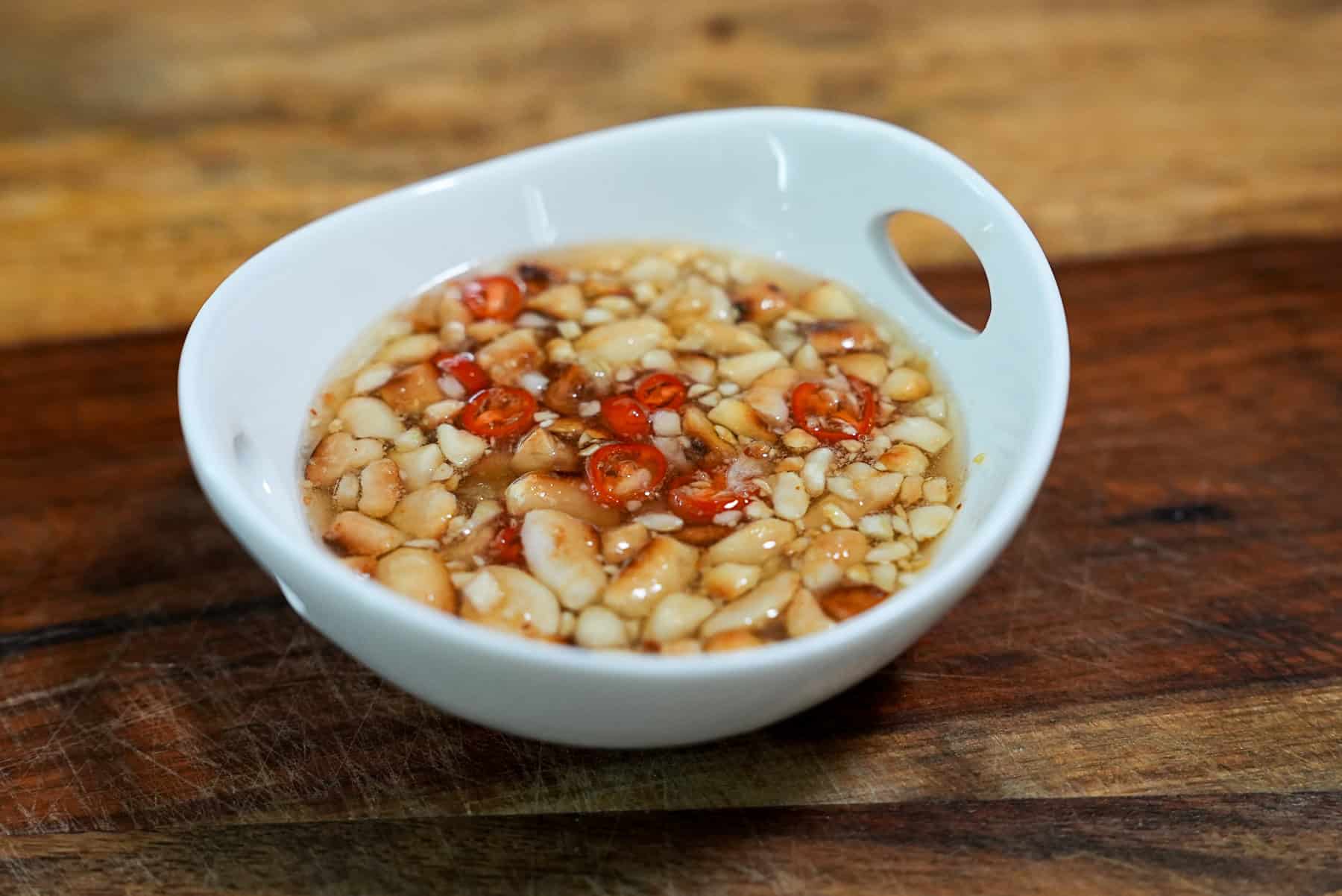
Miang Pla Tod can be served with various sauces, from a sweet and savory sauce like that which is used in Miang Kham to a spicy Seafood Dipping Sauce made with chilis, lime, and cilantro. I particularly like the sauce presented here - it's a sweet and tangy sauce with chopped peanuts and it complements the fresh ingredients used in this recipe beautifully.
To make this Nam Jim with Peanuts, first crush some roasted peanuts with your mortar and pestle. Chop the garlic and chili finely, then add them to the fish sauce, lime juice, and palm sugar. Stir until everything is well combined, then stir in the crushed peanuts.
Serving Miang Pla
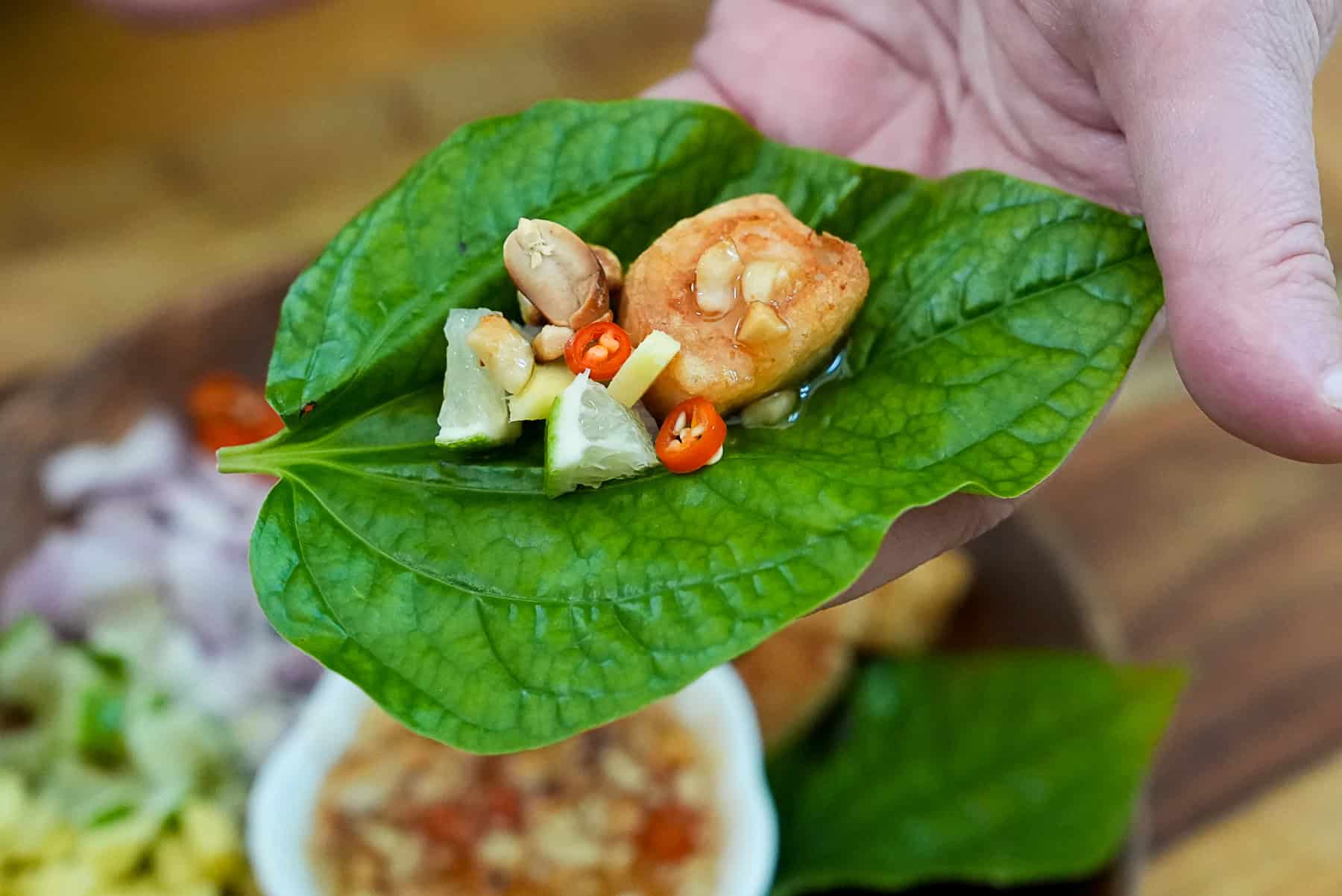
Just like Miang Kham, Miang Pla is often served on a platter with a bowl of sauce in the middle and the other ingredients surrounding it. That way, you can choose a leaf, place your bite-sized piece of fish on top, add the other ingredients you'd like, and then drizzle the sauce over it all. Then fold up your leaf and pop it into your mouth for a wonderful burst of fresh flavors!
Just one bite has a little bit of everything -- it's nutty, gingery, tart, sweet, and spicy. The tender fish melts in your mouth and provides a beautiful contrast to the texture of the other ingredients. This Miang is especially delicious when the fish is still hot, so I'd suggest preparing all of the other ingredients, and frying the fish right before serving.
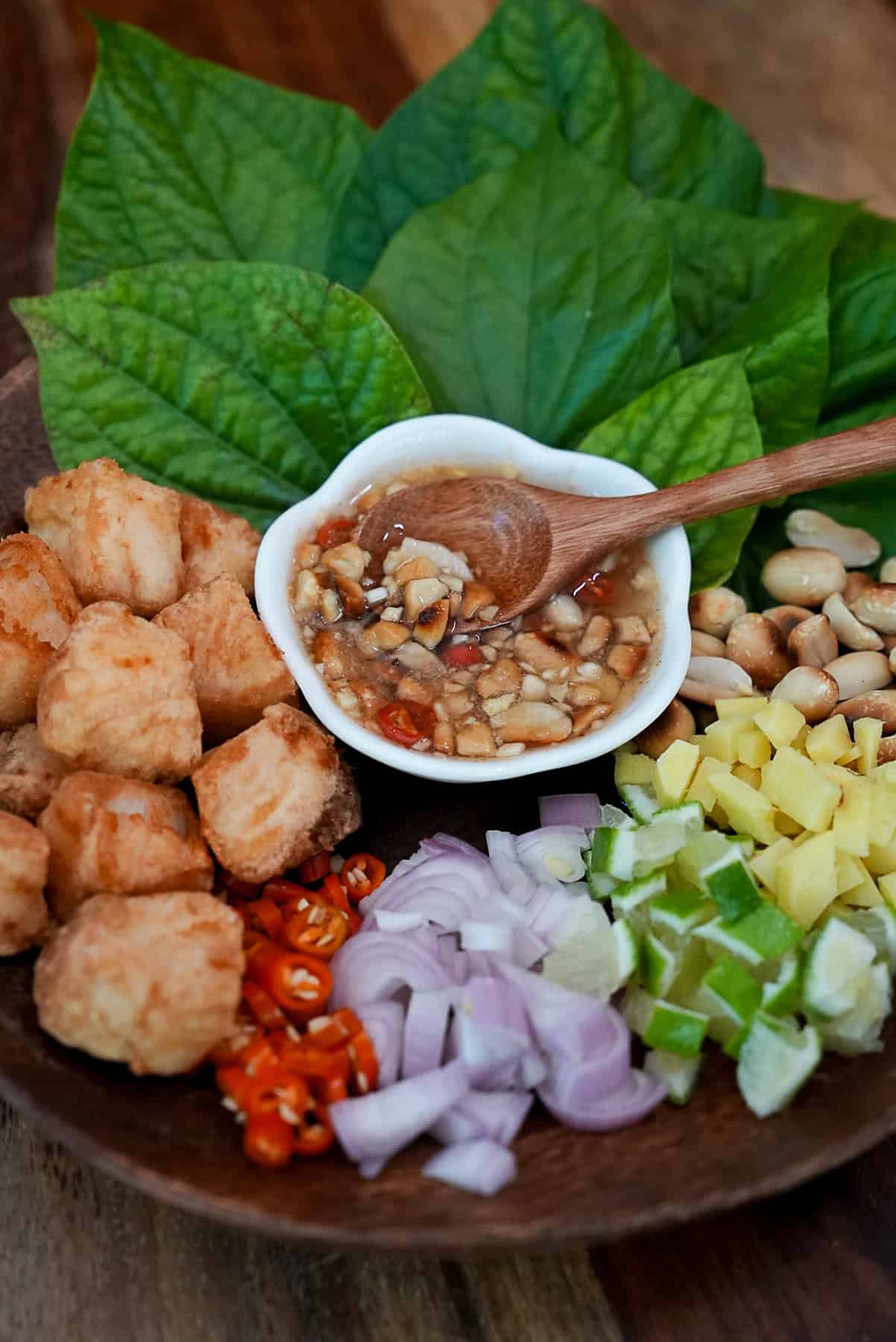
Like the more popular Miang Kham, Miang Pla Tod makes for an impressive start to a Thai meal. It's a bit quicker and easier to put together than Miang Kham, making it my new go-to Thai appetizer. I hope you'll give it a try!
Recipe
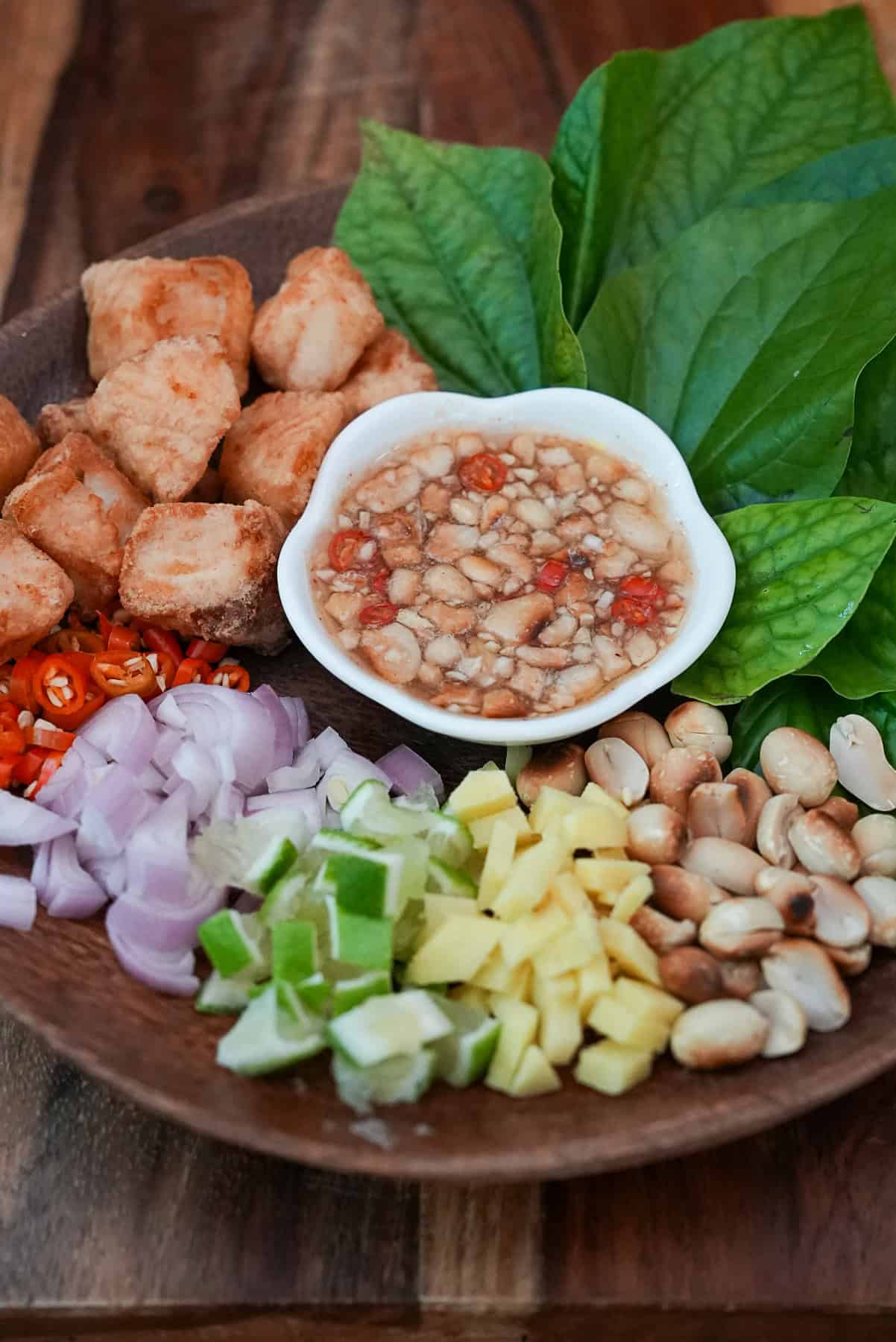
Fried Fish Appetizer | Miang Pla Tod | เมี่ยงปลาทอด
Ingredients
For the Fried Fish:
- 1 filet tilapia or other mild-tasting fresh fish
- 3 Tablespoons Gogi tempura flour
- oil for frying
For the Sauce:
- 1 Thai chili pepper
- 1 clove garlic
- 2 Tablespoons fish sauce
- 3 Tablespoons lime juice
- 3 Tablespoons palm sugar
- 2 Tablespoons roasted peanuts
For the Appetizer:
- 20 wild pepper leaves
- 2 Thai chili peppers
- ¼ cup lime segments
- ¼ cup shallots
- ¼ cup ginger
- ¼ cup roasted peanuts
Instructions
To Make the Suace:
- Crush your roasted peanuts in a mortar and pestle, or alternatively give them a coarse chop with a chef's knife. Set aside.
- Finely chop the garlic and Thai chili pepper. Add to a bowl, along with fish sauce, lime juice, and palm sugar. Stir until the palm sugar is dissolved.1
- Before you're ready to serve, add the crushed peanuts to the sauce.
To Make the Fried Fish:
- Wash and dry your fish filet. Cut into bite-sized cubes.
- Coat the fish with the Gogi tempura flour, using as much as needed to achieve an even, consistent white coating.2
- Heat the oil over medium high heat. Once the oil is hot, add your coated fish pieces and allow to cook for 2-3 minutes, until they are golden brown on the outside and cooked through on the inside. Allow to drain in a colander or on a paper towel. Sprinkle with salt while still hot.
To Make the Appetizer:
- Peel the shallot and ginger and slice both into small cubes.
- Roast the peanuts by dry frying in a pan over low to medium heat, according to this article.
- Cut the Thai chili peppers into small slivers. Slice the lime into small segments, keeping the peel on as long as it is thin enough. If the peel of the lime is too thick to easily eat, it should be removed.
- Assemble all of the ingredients on a plate, surrounding a bowl of sauce in the middle. Encourage each diner to make their own parcel with a leaf, a piece of fried fish, the fresh ingredients they'd like, and a drizzle of the sauce. Enjoy while the fried fish is still hot!
Notes
- If you are starting with a hard block of palm sugar, you can help it to dissolve by slicing it into very fine shreds before mixing it with the liquid ingredients. Alternatively, you can add several drops of water to the hard sugar and microwave it for several seconds until the sugar melts, then combine it with the liquid ingredients.
- If you do not have Gogi flour, you can substitute cornstarch.


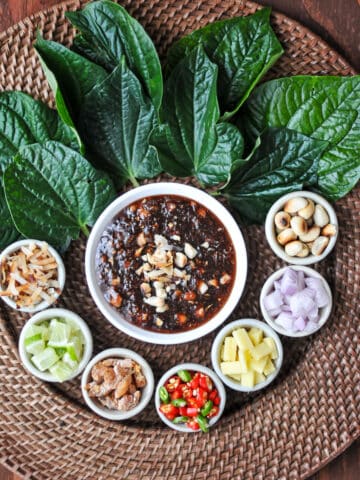
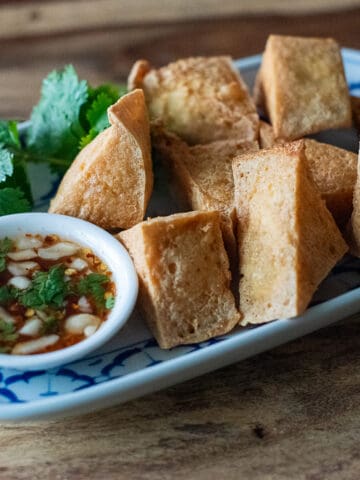
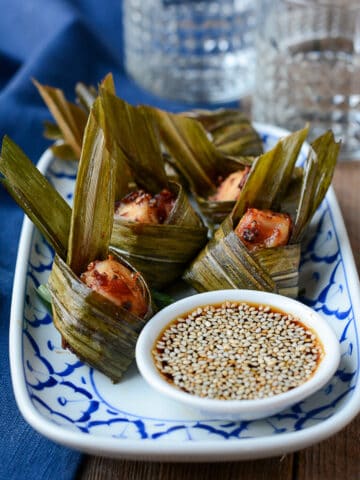

Leave a Reply